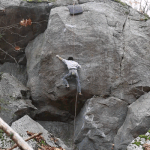
This column first ran in Valerie Monroe’s newsletter, How Not to F*ck Up Your Face, which you can subscribe to on Substack.
Q: The girls I care about are entering adolescence in a time of multistep facial cleansing routines, TikTok videos with filters and professional lighting, and a certain commercially homogenized beauty ideal, in addition to (as always) holy grail cosmetic products. What are the simplest steps and products upon which to build a basic beauty and skin-care routine that will serve them well throughout the years to come? And what would you recommend to help them establish healthy self-regard?
A: My initial reaction, as you’ll suspect, is, This can’t be good. Because who benefits most from indoctrinating kids into elaborate, unnecessary skin-care routines? Not the kids.
In my limited experience raising a male child, the imperative at pre-adolescence and adolescence was to be sure a soapy shower was taken regularly. My own initiation into skin care, which didn’t start until age 17, involved only an antibacterial face wash called pHisoHex. For specifics about why a multistep routine might not be a great idea for girls, I turned to two dermatologists with kids of their own.
“There’s nothing wrong with taking care of your skin and adopting good habits at an early age. But there’s a point where preteen and teenage skin-care regimens can feel like indoctrination into a beauty cult, which can involve a quest for an unattainable holy grail,” says dermatologist Laurel Geraghty, hitting the nail on the head.
She has patients — and an increasing number of teens and tweens — on a seemingly never-ending pursuit of perfect skin, obviously an unrealistic ideal. “These girls feel they can only achieve their goal through boundless research and the purchase and application of every last product on the hallowed shelves of Ulta Beauty,” says Geraghty. And the results can be problematic.
“I see these girls in my practice often because they’re experiencing side effects of using skin care that’s not appropriate for their skin,” says dermatologist Jessica Weiser. “They watch TikTok videos and then buy a load of products based on an influencer’s recommendations. Not only is this not good for their skin, it can also be damaging to the psyche. There’s immense pressure to have a ‘perfect’ complexion that appears, from these influencers, to be attainable only through expensive products and complex skin-care routines.”
Jessica DeFino points out how deep that psychological damage can be in an interview with Tate Ryan-Mosley in MIT Technology Review:
From the standpoint of psychological health, there are definitely studies and surveys that show that teen girls specifically, but also women across the age spectrum, are experiencing higher instances of appearance-related anxiety, depression, body dysmorphia, facial dysmorphia, obsessive beauty behaviors, disordered eating, self-harm, and even suicide. And there’s a lot that can be traced back in one way or another to this increasingly visual virtual world that we exist in … [T]here is a lot happening in the beauty industry that has been specifically inspired by Instagram. I think a really great example of this is the phenomenon of Instagram face, which is basically a term that’s been coined to describe the way that Instagram filters have inspired real-world procedures and surgeries …
Issues [that affect] teen girls have historically been swept under the rug and dismissed. Things like beauty are seen as frivolous interests. And if they’re dismissed, we end up not getting enough studies, enough data about the harms of beauty culture, when in reality there are these huge and harmful cultural implications.
Additionally, says Weiser, most skin-care products are designed for the care of aging skin — and many products being touted for girls are for much more mature skin types. Often the antioxidants, exfoliants, eye masks, and heavy night creams can trigger skin congestion, acne, and rash irritation. Geraghty’s concerned about how much our kids (and all of us) feel we need to spend — or “invest,” an interesting word — on what’s often referred to as self-care.
For most people, especially young ones, very little is required to maintain healthy skin. Though specific skin conditions like acne, eczema, seborrheic dermatitis, and rosacea should be addressed. All that’s needed is gentle cleansing, perhaps moisturizing, and above all else, sun protection, said Geraghty. “I worry about the increasing number of grooming steps now perceived as standard as a part of a young person’s regimen,” says Geraghty. “Pedicures. Manicures. Masks. Hair removal. Highlights. Haircuts. These 12-step skin-care routines. And sooner or later, toxins, filler, lasers, et cetera.”
She observes that among the girls who crave something more, simple doesn’t feel like enough. A choreographed blend of skin-care essences and oils and toners somehow rings more true. And of course, they (and we) have influencers and beauty-industry marketers to thank for that.
But a complicated routine is so not the personal practice of dermatologists, Geraghty said. “We work with our skin type and remain consistent using a few active, proven ingredients. And we’re fanatics about sun protection. Which, by the way, is the best lesson for kids, as it’s the one lifelong gift we can give our skin.”
More From This Series
- A Laser Expert Shares Solutions for Facial Birthmarks
- Dealing With Dermatitis? A Dermatologist Weighs In.




